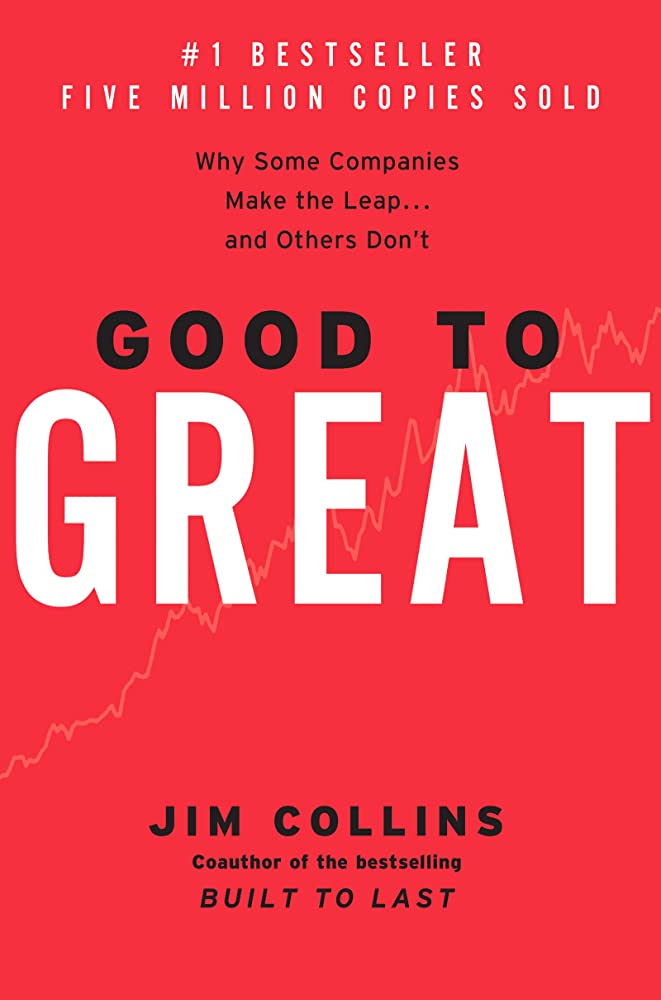Leadership in the Digital Age

Article Content
Leadership: what changes are digitalization, robotics, and AI bringing to businesses across the world?
That is a question that faces many companies with regards to adapting to a new generation made up of digital natives. Mr. Ruckman opined that while production has changed dramatically in the last century, with automation and AI tools coming online as we speak, the management structure has not evolved at the same pace.
“Most businesses are not designed for what we refer to as ‘complexity’
“Most businesses are not designed for what we refer to as ‘complexity.’ They may be designed for things that are complicated, where we may not understand everything that is happening at each step of the process, but the outcome is fairly predictable. In a complex environment, we don’t understand what is happening and often the outcome is very unpredictable,” he said.
Businesses are finding themselves in a situation where both people and AI are involved; the result is a need for a frontline workforce that is able to think, analyze and react. In order for this to happen, old management structures need to evolve so that employees are given more autonomy.
“That form of intelligence has been starved from the frontlines for years and held in the hands of a small group of people at the top of the hierarchy; we now need the people on the frontlines to be able to think and react to different situations as well as uncertainty in a unique way. We need different forms of intelligence on the frontline; that is to say, emotional intelligence, empathy, the ability to understand another person’s situation, understand the customer’s situation, as well as have social intelligence that allows for the development and management of relationships,” said Mr. Ruckman.
Senteo’s CEO went on to explain that management models from the past, which are based on classical management theory, are holding back decentralized management models and are making it difficult to push intelligence, decision making, and authority down to the frontline.
“To decentralize or centralize?
This is going to be the question of the next decade,” he said. “Every business is going to have to find this balance, but in principle things closer to customers that require thinking, emotional, and social intelligence, and the ability to react to uncertainty need to be decentralized and pushed down to the frontlines. Other things can remain centralized.”
What are digital natives?
Mr. Ruckman went on to talk in depth about digital natives and what businesses could do to adapt their management structures in order to gain the most out of the new generation and coming generations. What are digital natives? Over 50% of the workforce are now considered to be digital natives; these are people that grew up with video games, the internet, mobile internet, social networks and so on. People who grew up before the digital revolution are considered to be “digital immigrants.”
“Digital natives have a very different view of the world and
on what is positive, engaging and fulfilling”
“Digital natives have a very different view of the world and on what is positive, engaging and fulfilling,” said Mr. Ruckman. “These are not people that start a job at 20 and retire when they are 60; that no longer happens. The current work environment for the majority of these new generations is not necessarily designed to keep them engaged in a positive and fulfilling way.”
Digital natives interact as much online as offline and games and social networks act as parallel environments where they engage with other people. The average time spent in school vs playing video games up to the age of 21 is split evenly at 10,000 hours each (depending on the country, of course); this shows a parallel learning system: the school system (conventional knowledge, preparation for adult life) and games (a different values system). Mr. Ruckman challenges the current work environment by comparing it to the gaming environment, which he considers to be more engaging. It offers structured experiences, encourages cooperation to achieve a common goal, rewards for achievement, constant positive feedback, and you are encouraged to take chances and try new things.
“The work environment is not living up to this at all,” he said. “Work is often not structured, we’re often not trusted unless we have proven ourselves time again, work environments can be hostile and competitive, there might be office politics, feedbackcycles are lagging and rewards are slow, and you are encouraged to follow rules and not think outside the box. The work environment is not designed for this new generation, and that is where these new business models and the new management models are very important.”
According to Mr. Ruckman, mentors and guides should be a part of the new management model; he also points to a need for a free flow of information, especially in an entrepreneurial partnership environment. The other key factors needed for an agile organization are communication, collaboration, and community (clubs within an organization that facilitate personal ties) to replace hierarchal control and to get the best out of digital natives. “We need the social fabric that we have in games. We need that in the organizations today, and classical management strangles that.”
Interestingly, Mr. Ruckman goes on to say that the old “money for productivity” strategy does not necessarily work for employees engaged in strategic or creative work, or anything that engages basic cognitive skill. He says that the new principles of motivation for this new environment are autonomy, mastery and purpose.
“How do we have the autonomy?” he asks. “Think back to our gamers. They have the autonomy when they are playing a game in their environment; it’s their game to win or lose. They are engaged in mastery because they are learning more with each stage of the game. In terms of purpose, gamers experience urgent optimism, the social fabric, and blissful productivity. Leaders that understand the principles of motivation for this new generation and this new environment are going to understand that autonomy, mastery, and purpose are the key motivators.”


Sales training for front line along with basic development and coaching principles for line management.
Understanding branding and communications from the standpoint of emotional engagement and building relevant and meaningful dialogue with customers.
This course covers a complete view of customer touch points (both physical and virtual) and a unique model for standardizing and managing customer contact models across channels including approaches for customer feedback, quality management, and migration.
Understand how the innovation process changes moving from functionality and channel design to a process focused on creating value for customers.
Experiential Branding & Communications – Improving Brand Integration Through Emotional Engagement.
This course covers a complete view of customer touch points (both physical and virtual) and a unique model for standardizing and managing customer contact models across channels.
Understand the value of a customer-oriented analytics package and how behavioral scenarios can be used to improve profitability through influencing behavior and usage.
To understand the principles of game dynamics and learn how to effectively use the elements of gamification in business: to involve customers, employees and contractors in the process.
Understanding branding and communications from the standpoint of emotional engagement and building relevant and meaningful dialogue with customers.
This course covers a complete view of customer touch points (both physical and virtual) and a unique model for standardizing and managing customer contact models across channels including approaches for customer feedback, quality management, and migration.
Experiential Branding & Communications – Improving Brand Integration Through Emotional Engagement.
This course covers a complete view of customer touch points (both physical and virtual) and a unique model for standardizing and managing customer contact models across channels.
Sales training for front line along with basic development and coaching principles for line management.
Understanding how leaders must evolve with relation to the evolution of business models, new management models, and the significant changes to the workforce with Digital Natives now making up more than 50% of the workforce globally.
Understand the theory and mechanics of developing and managing a customer-centric and experience-driven corporate culture that is consistent and stable and includes elements of Employee Experience (EX) and Employee Relationship Management (ERM).
Understanding the evolution of leadership styles, management models, organizational structures, performance measurement and guiding change in the evolution of business models from product-centric to customer-centric and even relationship-centric.
Understand how to manage both internal and external digital transformation while considering the landscape for digital business models and the effect on traditional business models. Understanding organizational readiness for transformation and the role of corporate culture in managing transformations.
The changes in consumer behavior, employee behavior, and the evolution of business models in the digital age cause significant difficulties and imperatives for leaders who must develop new skills and evolve their leadership styles to be effective in this fast changing, challenging, and competitive environment.
Understand the value of a customer-oriented analytics package and how behavioral scenarios can be used to improve profitability through influencing behavior and usage.
To understand the principles of game dynamics and learn how to effectively use the elements of gamification in business: to involve customers, employees and contractors in the process.
Understand the components and features in a complex Customer Relationship Management system (infrastructure, architecture, functionality, etc.) and the uses and benefits for both the business and the customer.
Understanding the range and function of different relationship management processes used to build customer engagement models and manage the quality of customer relationships.
Understand how the innovation process changes moving from functionality and channel design to a process focused on creating value for customers.
Understanding the drivers and mechanics of corporate culture will help any management to design and develop an organizational culture for success and growth.
Understanding how leaders must evolve with relation to the evolution of business models, new management models, and the significant changes to the workforce with Digital Natives now making up more than 50% of the workforce globally.
Understand how to manage both internal and external digital transformation while considering the landscape for digital business models and the effect on traditional business models. Understanding organizational readiness for transformation and the role of corporate culture in managing transformations.
The changes in consumer behavior, employee behavior, and the evolution of business models in the digital age cause significant difficulties and imperatives for leaders who must develop new skills and evolve their leadership styles to be effective in this fast changing, challenging, and competitive environment.
Understanding how to design & manage change/transformation programs in organizations of different sizes. This course will help any size team or organization to better deal with change & transformation on any scale.




 Copy Link
Copy Link
 E-mail
E-mail
 LinkedIn
LinkedIn
 Facebook
Facebook
 Telegram
Telegram
 WhatsApp
WhatsApp









 Go Back
Go Back
Leave a Reply
You must be logged in to post a comment.